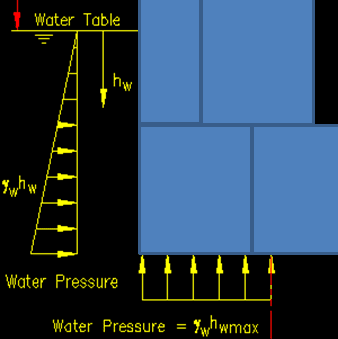LR11
Structural
- Sep 13, 2001
- 166
I'm trying to figure out if this would be a real case, if anyone has designed for it?
A gravity retaining wall holding saturated soil?
What if you have a wall without mortar, would you take into account the pore pressures?

A gravity retaining wall holding saturated soil?
What if you have a wall without mortar, would you take into account the pore pressures?


